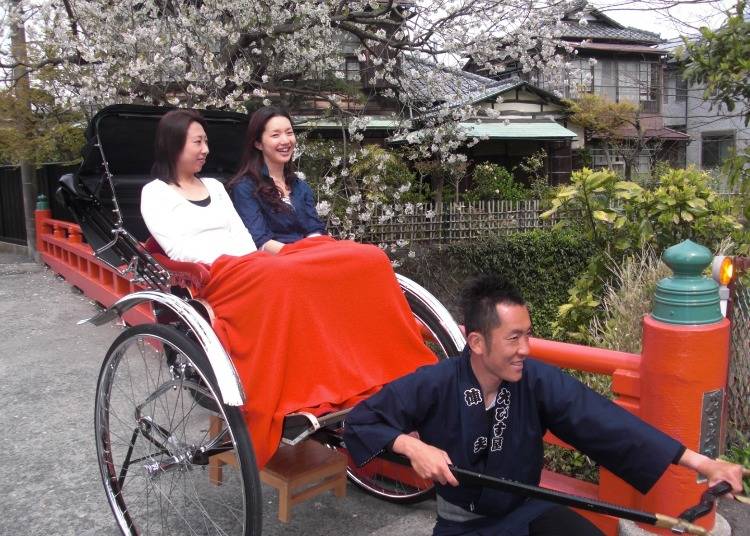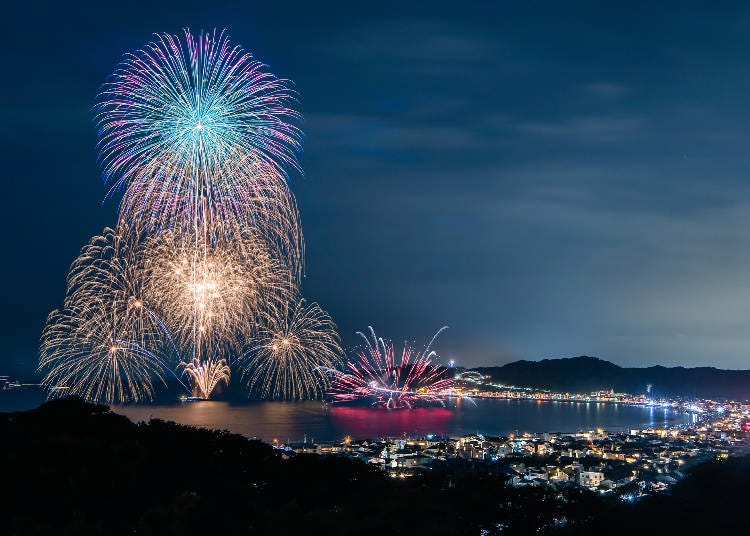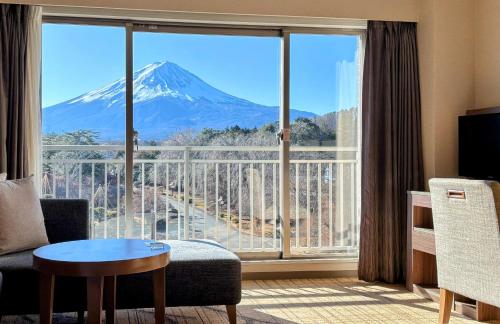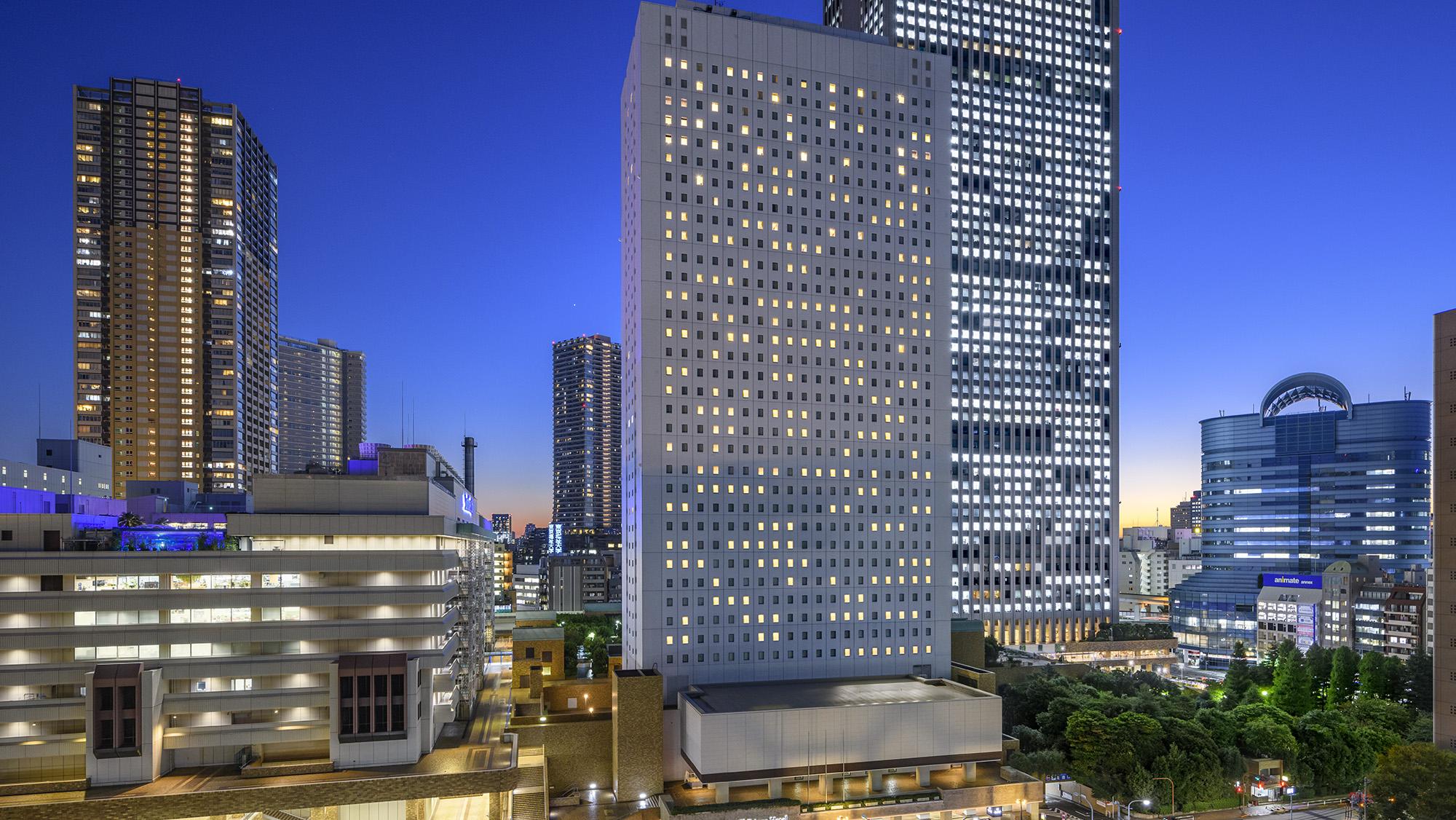
Having lived in Japan for over 20 years, I have visited cities and towns in every prefecture. And Kamakura remains one of those places I can’t get enough of. Whether it’s strolling around serene temples with gorgeous gardens, hiking along forest trails, noshing on a burger by the beach, or shopping on Komachi Street, here are some of my recommended things to do in Kamakura.
(Main image: PIXTA)
(This article contains affiliate links)
Why Visit Kamakura? Your Guide to a Perfect Day Trip
Now a laid-back coastal city surrounded by mountains, Kamakura was once the political center of Japan from 1185 to 1333, in what was called the Kamakura Period. It was here that Minamoto no Yoritomo established the Kamakura Shogunate, seeing the rise of the samurai warrior class and the firm establishment of feudalism, which would shape Japan for centuries to come. This period also saw Kamakura’s prosperity rise, and in turn the area attracted cultural and religious figures, leading to a flourishing of art, architecture and literature – an era that saw the construction of numerous temples and shrines around the area.
If you are interested in reading more about this fascinating history, I suggest reading Kamakura: Fact and Legend, written by Countess Iso Mutsu in 1918. Over 100 years have passed since that book was published, and yet when you stroll around many of the temples and streets today, many of Mutsu’s keen observations are unchanged.
Why Kamakura is worth visiting
Kamakura is worth visiting on a day trip from Tokyo for several reasons.
First, you needn’t be familiar with Japanese history to enjoy the areas (though some context helps). You can get a taste of Kyoto without the crowds here. Many of the temples and museums have basic information in English, and some provide information in Chinese, Korean, and even other languages as well.
Kamakura also has a healthy variety of dining options available, from Western fare to traditional Japanese, from cafes to seafood – check out Gurunavi.com for a list of recommendations. While many of the restaurants and shops concentrate on the area around Kamakura Station, there are clusters of great spots near stations along the Enoden line, as well as spots tucked a bit farther away from the bustle.
Kamakura is close to Tokyo. From Tokyo Station, it is about 55 minutes via the Yokosuka Line, while from Shinjuku Station, it is about an hour via the Shonan-Shinjuku Line. I suggest considering reserving a Green Car seat (around 1,000 yen extra) so you can stretch your legs and enjoy your journey in style.
- JR Yokosuka Line: The most direct route. Departs from Tokyo Station and Shinagawa, taking approximately 1 hour.
- JR Shonan-Shinjuku Line: Convenient if you're starting from Shinjuku, Shibuya, or Ikebukuro. The ride takes about 1 hour.
- Travel Passes: The Hakone Kamakura Pass is a cost-effective option for travelers from Shinjuku, including a round trip and unlimited rides on Odakyu lines, Enoden, and 8 transportation services in the Hakone-Kamakura area. The 3-day pass also offers free or discounted admission to around 70 attractions, including top spots like Hakone Shrine, Lake Ashi, and Owakudani Valley.
- Kamakura is a very walkable town, so you will want comfortable shoes and be prepared to get your 10k steps in!
- To expand your range, consider renting an electric-assisted bicycle at the station.
- The Enoden line connects Kamakura with Fujisawa, stopping at Hase and Enoshima Island along the way, two recommended sightseeing areas.
Kamakura is a beautiful area in every season. Spring sees cherry blossoms in bloom at several temples and shrines, and even around the Great Buddha, the second-largest bronze Buddha in Japan. Summer sees beachgoers gathering from everywhere, and it’s the perfect time to enjoy a nosh at one of the seasonal beach huts, a refreshing pint of local craft beer, or even just some cold soba noodles after a stroll through a bamboo garden. Autumn sees Japanese maples turn fiery hues, and the inviting crisp air makes it perfect for exploring the area’s many hiking trails. And in winter, the clear sky affords jaw-dropping views of Mount Fuji, the peaceful giant across Sagami Bay.
How long should I spend in Kamakura?
Kamakura is fairly compact, and the major sights can be enjoyed within a full day. If you are strapped for time, consider the highlights: Tsurugaoka Hachimangu Shrine, Hase-dera Temple, and the Great Buddha. If you have a full day, consider also adding a visit to Enoshima Island. And if you fancy a change of pace from Japan’s larger cities, consider staying at the Hotel Metropolitan Kamakura, Tosei Hotel Cocone Kamakura, Kamakura Hotel, or one of the other accommodations around the city.
Let’s have a look at some of the fun things you can do to enjoy your time in Kamakura.
Top Things to Do in Kamakura (Any Season)
Shop for Souvenirs and Snacks on Komachi-dori Street

Situated near the east side of Kamakura Station, Komachi-dori Street offers a wide range of small retail shops, offering everything from washi paper to cute souvenirs to umbrellas and canvas bags. Along this charming street, you’ll also find a range of restaurants, cafes, and tons of take-out shops where you can grab an ice cream or croquette on the go! Once you are done shopping, the street ends at Tsurugaoka Hachimangu Shrine, so you can visit both in one easy trip.
Experience Japanese Tradition in a Kimono
Kamakura, with its ancient temples, serene landscapes, and deep historical roots, offers a step back in time to Japan's rich cultural past. One of the most immersive ways to truly feel the essence of this city is by donning a traditional kimono. Renting a kimono not only provides a unique aesthetic experience, but it also allows you to walk the streets of Kamakura as if you were part of its storied history.
Take a Rickshaw Tour Through Kamakura

If you’d like to explore Kamakura at a leisurely pace while getting insider tips from a local guide, consider hiring a traditional rickshaw (jinrikisha). These two-wheeled carriages, pulled by energetic drivers in traditional attire, are a unique way to see the city’s highlights and hidden corners. Tours start around Kamakura Station and basically come in four courses: a 12-minute quick guide, 45-minute, 80-minute, and 160-minute.
One of the best parts of a rickshaw tour is the commentary, as drivers will happily recommend seasonal spots, photo opportunities, and even local eateries you might otherwise miss. (Note that a guide for languages other than Japanese typically costs slightly extra, with an added 1,000 yen.) The elevated seat also gives you a different perspective of Kamakura’s narrow lanes and temple approaches, perfect for capturing memorable photos.
Prices vary depending on time and route, but as a rough guide expect to pay around 5,000 yen for a short ride for two people, with longer customized tours available. If you’re visiting as a couple or family, it’s both a fun experience and a relaxing way to get around without worrying about the crowds or directions.
Marvel at the Iconic Great Buddha (Kamakura Daibutsu)
We would be remiss if we didn’t first mention the Great Buddha of Kamakura City (also known as the Kamakura Daibutsu). This national treasure is a must-see, as the bronze statue sits at 11.3 meters tall and weighs around 121 tons.
The Amitabha Buddha is visited by people from all over the world because it is one of the only statues of its kind to sit outside. There is much unknown about the large statue, the artist, and even the funds for its creation are a mystery, but it did sit inside at one point before the hall was destroyed.
If you are curious about its construction, you can enter the statue for a fee of just 50 yen. Make sure it is a sunny day, as there is no light inside, and it can be hard to see if it is dark or cloudy.
-

-
Address
4-2-28, Hase, Kamakura-shi, Kanagawa, 248-0016
View Map -
Nearest Station
Hase Station (Enoshima Electric Railway Line)
7 minutes on foot
- Phone Number 0467-22-0703
-
Address
4-2-28, Hase, Kamakura-shi, Kanagawa, 248-0016
Visit the Historic Tsurugaoka Hachimangu Shrine
The city of Kamakura was built around Tsurugaoka Hachimangu Shrine, so it makes sense that it sits in the heart of the city and is considered a “power spot” filled with spiritual energy. If you walk around Kamakura, you are sure to see this magnificent Shinto shrine with bright red colors. The shrine celebrates the messenger of the Hachiman god, which is the pigeon, so it is sometimes colloquially called the “Hato Shrine” as “hato” means pigeon in Japanese.
-

-
Address
2-1-31, Yukinoshita, Kamakura-shi, Kanagawa, 248-8588
View Map -
Nearest Station
Kamakura Station (JR Yokosuka Line / JR Shonan Shinjuku Line / Enoshima Electric Railway Line)
10 minutes on foot
- Phone Number 0467-22-0315
-
Address
2-1-31, Yukinoshita, Kamakura-shi, Kanagawa, 248-8588
Savor the Local Specialty: Shirasu-don

No matter where you go in Kamakura, you are sure to find the local specialty, “shirasu.” Shirasu (whitebait) is the name for small, young, white sardines, and Kamakura’s location close to the sea makes it the perfect spot to try them. Don’t let these little guys fool you, they have a fantastic salty flavor and the texture is soft and fluffy, especially paired on top of white rice, called “shirasu-don.”
Things to do in Kamakura in Spring
Stroll Under Cherry Blossoms at Dankazura Path

Spring in any city in Japan means you should definitely check out the cherry blossoms. One of the best places to do this isn’t a temple or shrine, but a simple walkway near Tsurugaoka Hachimangu Shrine. Walking south out of the temple, you will see a raised path lined with cherry blossom trees and a huge torii gate. Make sure to take a walk through here in the evening, as they light up the trees and the path becomes a magical and romantic night walking spot.
Find your inner Zen in the Bamboo Grove at Hokokuji Temple

Hokokuji Temple is well-known as Kamakura's bamboo temple, famous for the small bamboo grove behind the main structure. If you have never been to a bamboo grove, you are in for a real treat. Stop and let the sounds of the bamboo clacking together in the wind give you a calming and peaceful experience. In the spring, the forest is filled with new bamboo shoots sprouting from the ground, giving a feeling of renewal to the place. Two options are available for admission, and I highly recommend the one that includes a cup of freshly made matcha tea you can enjoy while viewing the bamboo grove.
-

-
Address
2-7-4, Jomyoji, Kamakura-shi, Kanagawa, 248-0003
View Map -
Nearest Station
Kamakura Station (JR Yokosuka Line / JR Shonan Shinjuku Line / Enoshima Electric Railway Line)
- Phone Number 0467-22-0762
-
Address
2-7-4, Jomyoji, Kamakura-shi, Kanagawa, 248-0003
Try Hato Sabure, Kamakura’s Famous Cookies
One of Kamakura’s most popular souvenirs is Hato Sabure, or “pigeon cookies.” First made in the late 19th century by the long-established shop Toshimaya, these buttery shortbread biscuits were inspired by French sablés and shaped to honor the messenger of Hachiman, the god enshrined at Tsurugaoka Hachimangu.
Crisp, light, and slightly sweet, Hato Sabure are beloved both as a snack and as a gift to take home. You’ll find them packaged in bright yellow boxes featuring the signature pigeon design—hard to miss when browsing shops around Kamakura Station or Komachi-dori Street.
Things to Do in Summer
See Hydrangeas in Bloom at Hase-dera Temple

This breathtakingly old Japanese temple is home to one of the largest wooden statues in Japan of the Kan'non Bodhisattva, standing over 9 meters tall in the main hall. When you are done admiring the beauty of the temple, make your way around the lush grounds and admire all the flowers that summer has to offer. Hase-dera Temple prides itself in over 2,500 hydrangea plants, which bloom from early to mid June, and taking the mountain walk through the temple grounds allows you to admire their gorgeous colors.
-

-
Address
3-11-2 Hasaya, Kamakura, Kanagawa Prefecture, 248-0016
View Map -
Nearest Station
Hase Station (Enoshima Electric Railway Line)
5 minutes on foot
- Phone Number 0467-22-6300
-
Address
3-11-2 Hasaya, Kamakura, Kanagawa Prefecture, 248-0016
Relax on Kamakura’s Beaches

There is nothing better in summer than hitting the beaches, and Kamakura’s seaside location makes it perfect for beach-hopping. Get your swimsuit and sunscreen ready and check out Yuigahama beach, which is about a 20 min walk from Kamakura Station and surrounded by gorgeous mountain views and soft sand. Or make your way to Shichirigahama Beach, which on clear days boasts views of Mt. Fuji, a perfect backdrop for your Japanese beach vacation.
Cool Down with a Kamakura Beer
When the summer gets too hot for you, look for one of the beer gardens in Kamakura City and try a cool and refreshing Kamakura Beer. This hand-brewed beer is bottled right in the city and the mild aroma and mellow taste reflect the gentle charm of Kamakura. The bottled brew is the perfect addition to any Japanese meal on a hot summer day, and you can even find some with the Great Buddha on the label, which can be saved as a memorable souvenir.
Watch the Kamakura Fireworks Festival

Each summer, Kamakura hosts its annual fireworks festival along the coastline of Yuigahama and Zaimokuza Beaches. This seaside setting makes for one of the most memorable fireworks displays in the region, as colorful bursts light up the night sky and reflect off the waves of Sagami Bay.
Around 2,500 fireworks are launched during the event, and it regularly draws crowds of over 100,000 visitors who spread out along the sand to watch the show. The atmosphere is lively, with families, couples, and groups of friends gathering early to stake out a spot and enjoy festival snacks.
Things to Do in Autumn
See the Yabusame Horseback Archery Festival

If you are visiting Kamakura in September, try catching the Yabusame Horseback Archery Festival at Tsurugaoka Hachimangu Shrine. Yabusame is the art of horseback archery that was popular among samurai. During the festival, you can see archers try to hit three targets on horseback while dressed in period clothing from the Kamakura Era. The festival is an awe-inspiring experience that takes you back in history to the time of the samurai.
Experience “Hasedera Night Table” in October

In October 2025, Hase-dera Temple hosts a special evening event called Hasedera Night Table. For four nights only (October 10–13), the temple grounds open after hours by advance reservation, giving visitors the chance to enjoy Kamakura in a completely different atmosphere.
After the daytime closing at 5 PM, you can walk through the beautifully lit temple grounds, admire a flower bonsai installation by garden designer Kazuyuki Ishihara, and listen to live concerts held inside the Kannon Hall before the Great Kannon statue. To end the evening, sit down to a garden dinner featuring seasonal flavors from Kamakura and the Shonan coast.
This event combines light, art, music, and food in one of Kamakura’s most iconic temples, making it a memorable highlight of an autumn visit. Advance reservations are required, and space is limited. See details at the official website (in Japanese).
Admire Fall Colors at Engakuji Temple
Engakuji is a picturesque temple located near Kita-Kamakura Station and is the second of the five great temples in Kamakura. In the fall you can enjoy walking the grounds and witnessing an explosion of fall colors on all the trees. In fact, it is one of the best places in Kamakura to see the autumn leaves on full display. Engakuji doesn’t just have spacious grounds and tons of history, it also boasts a tea-house with great views and zazen meditation available. When you think of peaceful temples with all the offerings of Japan, Engakuji should be at the top of your list.
-

-
Address
409, Yamanouchi, Kamakura-shi, Kanagawa, 247-0062
View Map -
Nearest Station
Kita-Kamakura Station (JR Yokosuka Line / JR Shonan Shinjuku Line)
1 minute on foot
- Phone Number 0467-22-0478
-
Address
409, Yamanouchi, Kamakura-shi, Kanagawa, 247-0062
Nosh on Autumn Veggies at the Kamakura Farmers Market
About a 5-minute walk from Kamakura Station is the Kamakura Farmers Market, also called Kamakura “Renbai.” This market was established in 1928 as one of the first European markets in Japan. Take a stroll around in the fall to find rare vegetables from Japan that are hard to find in other stores. Inside the market, you can also find stylish bakeries and yakitori stands that will entice you in as you pass by. The best time to visit is in the morning, as the market runs low in the afternoon.
Find Kamakura-bori Lacquerware

When it comes to buying souvenirs and gifts in Kamakura, don’t overlook handicrafts made with Kamakura carving. This special type of lacquerware was brought to Japan from China during the Kamakura Period and involves the carving of wood and then layering of lacquer for a smooth woody finish. The carving style has progressed until today and you can find small boxes, dishware, and decor with the signature techniques that highlight Kamakura. You can find these gifts in many stores along Komachi-dori, as well as other shops around the city.
Things to Do in Winter
Explore Kamakura's Museums
Although it is still nice enough to walk around in the winter, sometimes doing things inside in the heat is a nice treat. Art aficionados may wish to visit the Museum of Modern Art Kamakura Annex or the Kamakura Kokuhoukan Museum, which houses around 4,800 sculptures, paintings, and other artworks, many of which originate from the Kamakura and Muromachi periods. You can also visit artist-specific museums, like that of Kaburaki Kiyokata and Yo Shomei. Finally, if you want to learn more about Buddhism or browse the ancient collection from temples in the area, the Kannon Museum has tons of valuable treasures related to Buddhism.
Warm Up in Inamuragasaki Onsen (Hot Springs)

To really warm up during the winter, try out an “onsen” or natural hot spring. These public baths usually have amazing outdoor facilities with great views and plenty of amenities. About 20 minutes away from Kamakura station is Inamuragasaki Onsen, with views of Mt. Fuji and 42-degree Celsius water to warm up your bones on those cold winter days traveling. The water in the baths is supposedly rich in anti-aging properties and contains nutrients to nourish your dry winter skin. While you are there, be sure to check out the sauna and the indoor baths as well.
Eat “Korokke”
When you are ready for a warm treat, try stopping at a “korokke” stand, the Japanese version of croquettes. These warm treats come in all kinds of traditional flavors like beef, as well as sweeter flavors like sweet potato and even chocolate. Crispy on the outside and flavorful on the inside, a few korokke will keep your belly warm while you walk around the shopping streets of Kamakura.
Ride the Scenic Enoden Train Line

While you are sure to have the chance to ride a ton of different trains in Japan, the Enoshima Train Line, or “Enoden” for short, is something special. The small traditional Japanese train cars go along the coast and have views of the sea, so you can gaze at the ocean while you ride to your next destination in warmth and comfort. Anime fans might recognize a famous railroad crossing that appears in the opening scene of the hit manga Slam Dunk, so it is a popular photo spot for anime fans from both Japan and abroad. We recommend purchasing the one-day ticket, which provides unlimited rides (800 yen for adults, 400 yen for children), as well as special offers that can be used at various facilities, including restaurants, the Enoshima Aquarium, and temples.
Book a Kamakura Tour
- Area
- Category
*Prices and options mentioned are subject to change.
*Unless stated otherwise, all prices include tax.
Popular Tours & Activitiess
-
Ad

Discover the "Miraculous Forest" in the Heart of Tokyo: The Institute for Nature Study (9 Minutes from JR Meguro Station)
-
Ad

(Opening in Jan 2026) 'THE SUMO LIVE RESTAURANT HIRAKUZA GINZA TOKYO!' 5 Exciting Ways to Experience the World of Sumo!
-

Japan’s Shinkansen Is About to Change Travel in an Unexpected Way
by: Guest Contributor
-

Jujutsu Kaisen Takes Over JR East With a Wrapped Shinkansen This Winter
by: Guest Contributor
-

This Winter, Godzilla Takes Over Haneda Airport
by: Guest Contributor
-

First Japan Cherry Blossom 2026 Forecast Announced! Here's When & Where to See Sakura in Japan
Inspiration for Accommodations
-

Enjoy Mt. Fuji from the Comfort of Your Room! Recommended Ryokan with Mt. Fuji View
-

Stay Near the Cherry Blossoms! Hotels for Cherry Blossom Viewing in Tokyo
-

Family-Friendly Hotels with Free Shuttle to Disneyland: Convenient Access for a Magical Stay
-

Top Ranked Hakone Hotels with Mt. Fuji View: Enjoy Stunning Scenery from Your Private Space
-

Convenient Tokyo Hotels with Airport Shuttle: Ideal for Families and Heavy Luggage
-

Stunning Tokyo Tower View Hotels: Enjoy Spectacular Scenery from Your Private Space
-

Convenient Asakusa Hotels with Kitchens: Ideal for Extended Family Visits
-

Experience Luxury: Hakone's 10 Best Five-Star Accommodations
-

Enjoy Mt. Fuji Autumn Leaves! Top Hotels Near the Popular Autumn Leaves Corridor
-

Experience Hakone Fall Foliage from Your Room with Stunning Views
-

Tokyo's Free Sightseeing Buses - Explore the City, the Comfortable Way!
-

Tokyo Sakura Tram: Experience Tokyo's Secret Neighborhoods, Off the Beaten Path!
-
Ad

Chewy, delicious Japan-grown rice! Event planned to experience and enjoy Japan-grown rice
-

[MOVIE] A Japanese Drum Experience at TAIKO-LAB
by: Holly Neslusan
-

16 Secrets About Mt. Fuji, the Symbol of Japan: Even Japanese People Don’t Know That?!
-

Ikebukuro Station Area Guide: Top 15 Spots When You Escape the Station's Maze!
- #best ramen tokyo
- #what to buy in ameyoko
- #what to bring to japan
- #new years in tokyo
- #best izakaya shinjuku
- #things to do tokyo
- #japanese nail trends
- #what to do in odaiba
- #onsen tattoo friendly tokyo
- #daiso
- #best sushi ginza
- #japanese convenience store snacks
- #best yakiniku shibuya
- #japanese fashion culture
- #best japanese soft drinks






































